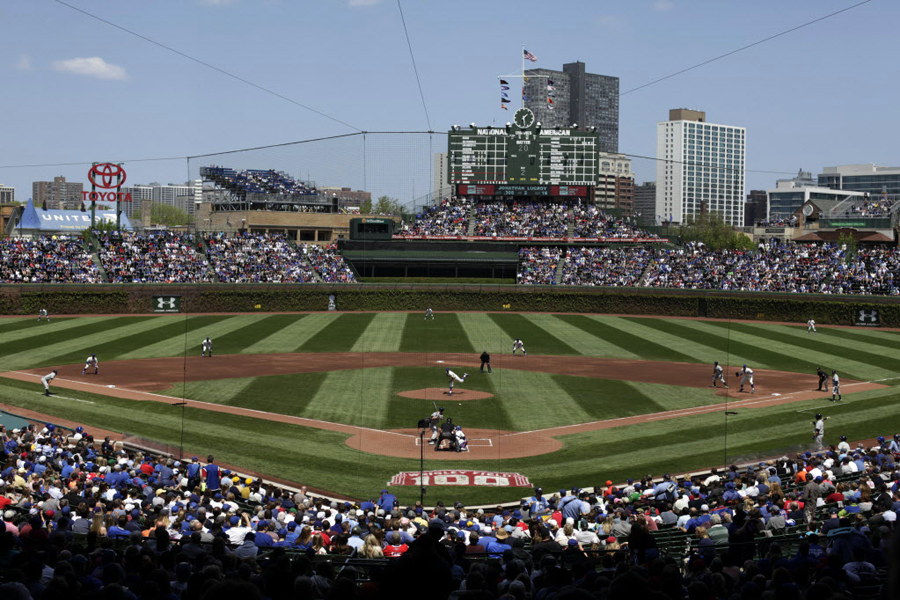Wrigley Field outfield signs plan risks lawsuit
Loading...
| CHICAGO
The Chicago Cubs signaled that their contentious relationship with the owners of rooftop venues across the street from Wrigley Field is about to become what amounts to a bench-clearing brawl, with a proposal Thursday to erect more outfield signs than the city said it could. That triggered an immediate vow from the rooftop owners to fight in court what they see as a threat to their views.
"We've spent endless hours in negotiations with rooftop businesses," Cubs chairman Tom Ricketts said in a video posted on the team's website. "We've gotten nowhere in our talks with them to settle this dispute. It has to end."
But the rooftop owners, who have long made it clear that they'd sue if the Cubs erected anything on the 100-year-old ballpark that cuts into the views from venues they've spent millions of dollars on, were just as adamant that they were not intimidated by what they see as an architectural brushback pitch from the Cubs.
"It appears their zeal to block rooftop owners who pay them millions of dollars a year in royalties knows no bounds," said Ryan McGlaughlin, a spokesman for the rooftop owners, whose contract with the team calls for them to share their revenues with the Cubs. "Unfortunately, this decision by the Ricketts family will now result in this matter being resolved in a court of law."
The City Council approved the Cubs' $500 million renovation plan last summer, but it has been stalled by opposition from the owners of the 15 rooftop venues. They have a contract with Cubs that runs through 2023 requiring them to pay the team 17 percent of their gross annual revenue.
What the Cubs are now planning to do is dramatically revise the expansion plan. While the Cubs have already been granted permission by the city to build a Jumbotron in left field and a video board in right field, the Cubs now want to build a second video scoreboard in right field and four more LED signs in the outfield, each as big as 650 square feet, and erect light standards in the outfield, and add 300 seats.
The plan, which the Cubs will present to the city's Landmarks Commission on June 5, also includes substantially increasing the size of the clubhouse beneath the new outdoor plaza.
The Cubs have maintained that they need the added revenue from the signs to pump money back into the team so it can end its 106-year World Series championship drought — and have not-so-subtly suggested the rooftop owners are standing in the way.
To drive home the point, Ricketts, in his video, appeared in the tiny clubhouse and struggled to keep a straight face as he explained how players take warm-up swings there without a proper batting cage.
A board is placed in front of a wall-mounted TV and a net is lowered from the ceiling. The player plunks a ball onto a tee "just like the ones kids use in Little League," Ricketts says in the video, and takes swings while wedged between a drinks cooler and the clubhouse's fold-out chairs.
While some of the changes sought by the Cubs require Landmark Commission approval, many don't, including design modification to the player facilities, expansion of the Cubs' clubhouse; expansion of the visitors' clubhouse and movement of the bullpen to an area under the bleachers.
"I know this plan is in the best interest of our fans and our players," Ricketts said in the video.
An emailed statement from Mayor Rahm Emanuel's office was supportive.
"Like all Cub fans, the mayor doesn't want to wait for next year and if this proposal helps the Cubs get closer to a ballpark renovation this fall — and the jobs and neighborhood investments that come with it — it's worth taking a look at," it said.







